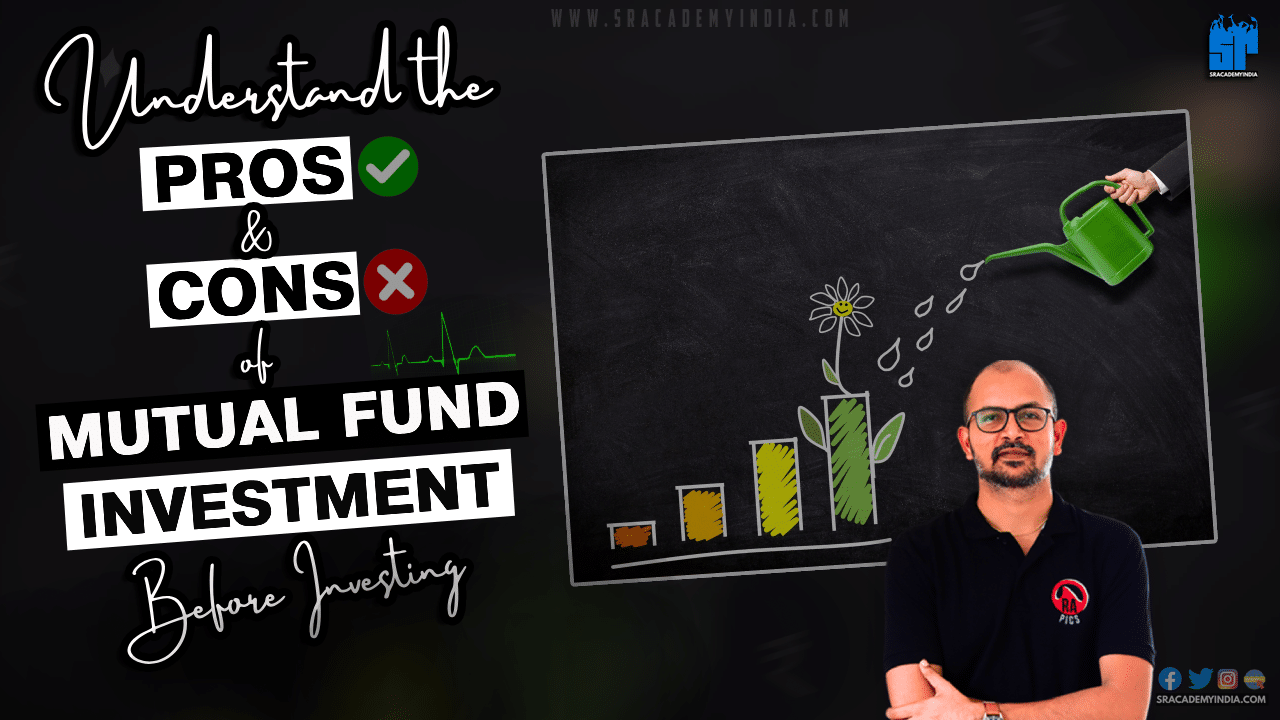In this article, I am going to share with you “40 Basic Accounting Terminology, which would be helpful for both students as well as for Business entrepreneurs.
We also compiled the Profit and Loss account & Balance sheet terms with the definitions and also shared various examples wherever required for a better understanding of the concept.
Let’s get started..!!
1. Assets
“Assets are the resources which are Owned by the enterprise. It may be either Purchased (or) Constructed (or) Built and having a future economic value”.
Assets include
- Fixed Assets (Incl. Tangible assets)
- Current Assets (Incl. Tangible assets)
- Fictitious Assets
- Intangible assets
2. Accounts Receivables
A business may sell goods or render services either on a Cash basis or Credit basis.
Whenever the Seller sells the goods or renders the services on a Cash basis, the seller immediately receives the Cash and there will be zero waiting time.
In case, the Seller sells the goods or renders the services on a Credit basis, the seller will not receive Cash immediately but he will receive it in near future as per the agreed terms. Such an amount that is receivable is called as “Accounts Receivables”
Example:
On 01st April, Mr. Rajashekar, a Standup comedian performed a live performance in Bangalore for a Movie promotion event and agreed for a remuneration of Rs.50,000/-.
The Normal cash collection period for Mr. Rajashekar is 10-15 days.
But the money is still pending from the producer for more than 90 days.
In such a case, the Amount of Rs.50,000/- which is still receivable by Mr. Rajashekar can be categorized as “Accounts Receivables” in his books.
3. Accounts Payables
A business may purchase goods or receive services either on a Cash basis or a Credit basis.
When the Buyer buys the goods or receives services on a Cash basis, he immediately receives the Cash and there will be no waiting time.
In case, the Buyer buys the goods or receives services on a Credit basis, then the Buyer will not pay Cash immediately but he will be agreed to pay it in near future. Such payable amount will be called “Accounts Payable”
Example:
On 01st April, Mr. Rajashekar, a Standup comedian performed a live performance in Bangalore for a Movie and agreed to a remuneration of Rs.50,000/-. The normal cash payment period for the producers is 45 days. But the money is still payable by the producer even for more than 90 days.
Here, In the books of Producers, the Amount of Rs.50,000/- which is still payable by them can be categorized as “Accounts Payables” .
4. Accrual Basis of Accounting
The accrual basis of accounting is one of the methods of recording accounting transactions in the books of accounts.
Under an Accrual basis, Revenue will be recognized when they are earned and Expenses will be recognized as and when accrued.
5. Bad Debts
Bad debts mean Debts that are not recoverable by the enterprise. It may be on Loan given (or) Goods sold (or) Services rendered etc.,
Normally, Bad debt arises when an enterprise sells goods or renders services to their customers on a credit basis for achieving the maximum sales. But few of the customers fail to pay the money and the debts cannot be recovered by the enterprise. Such debts are “Bad Debts”
6. Balance Sheet
Balance Sheet is a Statement that will be prepared to know the Financial position of the business enterprise at a specific point of time.i.e. 31st March of every year. I.e.
It shows the Assets, Liabilities, Reserves, Capital, and other balances at their Book values.
Balance Sheet normally consists of
- Assets
- Liabilities &
- Equity
7. Bills Receivables
Bills receivables are the amount of money expected to be received in the future by the company on goods sold or services rendered on credit. Bills receivable are drawn by the seller and will be shown under “Current assets” of the company in the Balance sheet.
8. Bills Payables
Bills payable are the amount of money expected to pay in the future by the company on goods bought or services received. Bills payable are drawn by the buyer and will be shown under the “Current liabilities” of the company in the Balance sheet.
9. Capital
Capital means the amount of money invested into the business by the owner for generating future cash flows and also for earning profits.
In the case of a Company limited by Shares, the Owners will be called “Shareholders” and the amount of money contributed by them is called “Share Capital or Owners Equity”
In the case of a Partnership firm, the owners will be called “Partners” and the Capital contributed by the partners will be called “Partner’s capital“
However, in the case of a Sole proprietorship, the owner will be called a “Sole Proprietor” and the capital contribution by the proprietor will be called “Proprietor’s capital“or simply “Capital“
10. Capital expenditure
Capital expenditure means the amount of money spent by an organization for the Acquisition of newly purchased assets (or) extending the existing useful life of the asset. The benefit of expense must be for a period of > 1 accounting period.
Then, what is Capex? Is there any difference between Capital expenditure and Capex?
No, both are the same only.
Capital expenditure is commonly known as “Capital expense” or “CAPEX“.
Read More: 18 things to know about Capital expenditure
11. Cash discount
A cash discount is a “Discount which will be given by the Dealer to its Customer for the recovery of Bad debts”.
In other terms, a Cash discount can also be defined as a discount which will be allowed to encourage prompt payment to clear the customer’s outstanding balance immediately.
12. Cash basis of accounting
Under the Cash basis of accounting, Revenues, Expenses, Asses, and Liabilities will be recognized only when the actual receipts or payments are made.
13. Credit Note
Credit note in short will be called “Cr Note“
Cr note is contrary to the Dr Note.
When a business sells goods but those are not in satisfactory condition either due to Quality or Damage or any other reason to the Customer, then, the Customer of the goods will return the goods to the Seller.
Here, again the buyer will issue the debit note and the Seller will accept it. And in return, a Credit note will be prepared by the seller as an acknowledgement to the buyer.
In simple, Cr notes mean Sales Returns.
Thus, the Cr note is a Commercial document that will be issued by the Seller to the buyer.
14. Credit
Credit means an entry that will be passed in the books of accounts
– When either the value of the Asset decreases or
– When the value of Liability & Equity Increases.
Example:
1. Existing old Machinery of Rs.2,00,000/- sold for a profit of Rs.15,000/-
The Accounting Entry will be as follows
| Date | Particulars | LF | Dr (Rs.) | Cr (Rs.) |
| Bank a/c Dr | 2,15,000 | |||
| To Machinery A/c | 2,00,000 | |||
| To Profit and Loss Account Dr | 15,000 |
Due to the asset sold, “Machinery,” account is to be decreased. Therefore, the “Machinery” account is to be credited as the value of the asset decreases.
15. Creditors
Creditor means simply a Lendor. I.e. the person who gave money
When a person /business purchases the goods or receives the services on a credit basis, the person from whom the goods purchased it (i.e. Buyer) or received the services will be called as “Creditor”.
A creditor is a person to whom the amount is liable to pay i.e. to the supplier and the group of such persons will be called as “Creditors”.
Eg: Credit Purchases
16. Debit
Debit means an Accounting entry that will be passed only
– When either the value of Asset value Increases or
– When the value of Liability & Equity Decreases.
Example:
M/s X Ltd bought Machinery of Rs.5,00,000/- for business. So, the “Machinery” account is to be debited as the value of asset increases in X ltd.
17. Debtors
The debtor is simply a Borrower.
When a person sells goods (Seller) or renders services on a credit basis, the person to whom the goods are sold (i.e. Purchaser) will be liable to return the money to the seller. Till the payment is cleared, such a person will be called as a “Debtor”. The group of such persons will be called as “Debtors”.
Debtor is a person who owes money to the business.
Debtors will be treated as Assets under the “Current assets” section of the Balance Sheet.
Eg: Credit Sales
18. Depreciation
If you use any asset, its value will be reduced over time due to wear and tear. I.e. Depreciation.
In simple, Depreciation means a “Decrease in the value of an asset”. It may arise either due to its usage or obsolescence or passage of time.
Eg: Motor Cars, Buildings, Equipment etc.,
19. Double Entry system
The double entry system of recording is the scientific method of recording transactions in the books of accounts.
Whenever you record any journal transaction, it will have an impact on at least 2 ledger accounts.
- The Debit side and the other will be
- On the Credit side.
The impact of transactions can be easily known on Assets, Liabilities, Incomes or Expenses. This system of recording gives you a True and Fair view of accounts..
The Debit amounts must be equal to the Credit amounts.
Example:
M/s Pipes Limited pays Rent of godown of Rs.5,000/-. As it is a business transaction, it will Increase “Rent A/c” on the “Debit side” and Decrease the “Bank Balance” on the “Credit side”.
The accounting entry will be as follows:
| Date | Particulars | LF | Dr (Rs.) | Cr (Rs.) |
| Rent a/c Dr | 5,000 | |||
| To Bank A/c | 5,000 |
20. Debit Note
Whenever the business purchased the goods but those goods are not in satisfactory condition either due to Quality or any other reason, then, the purchaser of the goods (i.e. Buyer) will return the goods to the Supplier (i.e. Seller).
This process of returning the goods by the purchaser to the supplier will be done through a Debit Note.
In simple, Dr notes means “Purchase Returns”
The Dr note is a commercial document that will be issued by the Buyer to the Seller.
Example:
Mr. Rohan returned damaged pipes worth Rs.10,000/- to the supplier of M/s Pipes Limited.
Here, Mr.Rohan is a Buyer and M/s Pipes Limited is the Seller of Pipes. As the goods received by Mr. Rohan were in damaged condition, he shall issue a “Dr Note” on M/s Pipes Limited.
21. Drawings
Any business owner who has withdrawn business money or uses the business goods for their personal purpose. I.e. Drawings.
22. Equity
Equity means the Owner’s capital (or) the Proprietor’s capital which is brought into the business in the form of Cash. It is also called as “Owner’s Equity“.
In case the money is brought into the business by way of Shares, then it will be called “Equity Share Capital“. While computing the Equity, Net income/ loss of the business should be taken into consideration.
In Simple, Equity means “What the business owes to its Owners”.
“Equity means Assets minus Liabilities”
23. Fixed Assets
Fixed Assets are the “Long-term assets which are having a useful life of more than 1 accounting period & held for earning future economic benefits”.
As per “AS 10, Property Plant & Equipment “ Fixed assets are the assets that are
- held not for resale.
- having a useful life of more than one accounting year.
- held either for Producing or Providing Goods or services.
24. Free reserves
A reserve that can be utilized for any purpose without any restriction.
25. Goodwill
Goodwill is a Premium amount paid by the Purchaser for the acquisition of a business entity over its fair value of identifiable net assets. Goodwill is an Intangible asset that arises due to the reputation of the organization.
26. Gross Profit
It is the Profit arrived after deducting the cost incurred for the production of goods from the sales (or) it is the revenue generated after deducting the cost of providing services from the income from providing services.
Gross Profit is also called “Trade Profit“.
Gross Profit = Sales – Cost of Goods Sold
Here, Cost of Goods Sold = Opening stock + Purchases – Closing stock.
27. General Reserve
It is a Revenue reserve that is not meant for any specific purpose.
28. Income
A business that earns either from selling goods or from rendering services or both.
Example:
1. M/s Hewlett-Packard (HP) company generates income by selling Desktops, PC etc.
Here, Desktops, PC’s are “Goods” to M/s Hewlett-Packard company
2. M/s Indigo Airlines generate income by providing Airline services to their customers
Here, Airline services come under “Services” to M/s Indigo Airlines
29. Journal
A Journal records all the financial transactions of a business in chronological order.
Every transaction recorded in a journal should also be supported by a narration that explains the nature of the such transaction.
However, while passing these entries one must ensure that both the Debit (Dr) and Credit (Cr) sides of the account should match.
Let’s understand with the help of an example:
Example:
M/s Fast Track company of a Hyderabad branch paid Electricity charges of Rs.1,83,000 to APEPDCL for the month of June by Cheque.
| Date | Particulars | LF | Dr (Rs.) | Cr (Rs.) |
| Electricity Charges a/c Dr | 1,83,000 | |||
| To Bank A/c | 1,83,000 |
30. Ledger
“A Ledger is a book where all the recorded journal transactions will be classified and posted”.
Ledger plays a key role in Identifying all the transactions at one place, which are done by any entity in a particular period. It gives you all the details of the transactions related to an Asset, Liability, Expense & Income in a particular period. Ledger helps in quick decision-making.
Ledgers in accounting are traditionally represented by “T” form structures which were widely used.
31. Loss
Excess of Expenses over revenue during the accounting period is a Net loss.
32. Net Profit
Profit or loss is generally arrived after deducting all operating expenses not appearing in the trading account from the operating income if it is the case of surplus then it is called as “Net Profit“.
Whereas if it is the case of loss then it is called “Net Loss”.
As per the companies act 2013 it is also called “Profit before tax (PBT)“.
Net Profit = Gross Profit – Operating costs
33. Net worth
It is the total value of assets an individual or company owns after meeting the liabilities they owe.
Net Worth is nothing but the difference between the Net assets and Liabilities of the business.
34. Overheads
The Aggregate cost of Indirect Materials, Indirect Labour, and Indirect Expenses.
Overheads = Indirect Materials + Indirect Labour + Indirect Expenses.
35. Profit & Loss account
The profit & Loss account is the tool to measure the performance of the business which is useful for the investors, financial institutions, creditors, and owners of the company for decision-making.
36. Provision
Provision is an amount that is kept aside to meet the expected loss/expense.
The provision refers to an amount that is also kept aside from the company’s profit in order to cover probable expenses arising in future or a possible reduction in the value of an asset. Creating provision is mandatory.
A reserve will be created when the profits are available but a Provision will be created irrespective of the profits for the business. It is created for known liabilities.
37. Reserve
Reserve
The term “Reserve” refers to a sum or percentage of the profit which a company retains or keeps aside from the earned profits at the end of a financial year towards meeting future contingencies that may occur.
In short, a reserve is an appropriation of profit or accumulated profit to strengthen the financial position of a business. These reserves can be for a general purpose or specific purpose. It is created for Unknown liability.
38. Revenue expenditure
Revenue expenditure is an expenditure that is
– Incurred for a period of less than 1 accounting period.
– I.e. Short term in nature.
– Incurred not only for the production of the goods and services
– but also for the expenses related to capital items.
Eg: House rent, Petrol expenses, Grocery, Restaurant bills, Purchase of clothes, Beauty Care, Gas bills
Read More: How to identify Revenue Expenditure
39. Trade discount
Trade Discount is a “Discount which will be allowed by the Wholesaler or Manufacturer to the Retailer for bulk quantities on a fixed percentage basis”.
The Trade discount will be allowed against a certain quantity of material (or) on the total Invoice value. The discount computation will be done based on Invoice Price (or) List price and Sales will be made on the basis of Net price. i.e List price less Trade discount.
40. Trial Balance
Trial balance is a statement that represents the balances of all ledgers in one place.
It is prepared to ensure that all the debit and credit aspects of the transactions, on any particular day are matching with each other.
Normally Trial balance will be prepared at the end of the period. The period may be either a Quarter or Half year or Full year i.e. Financial year.
Thanks for your time 🙂





